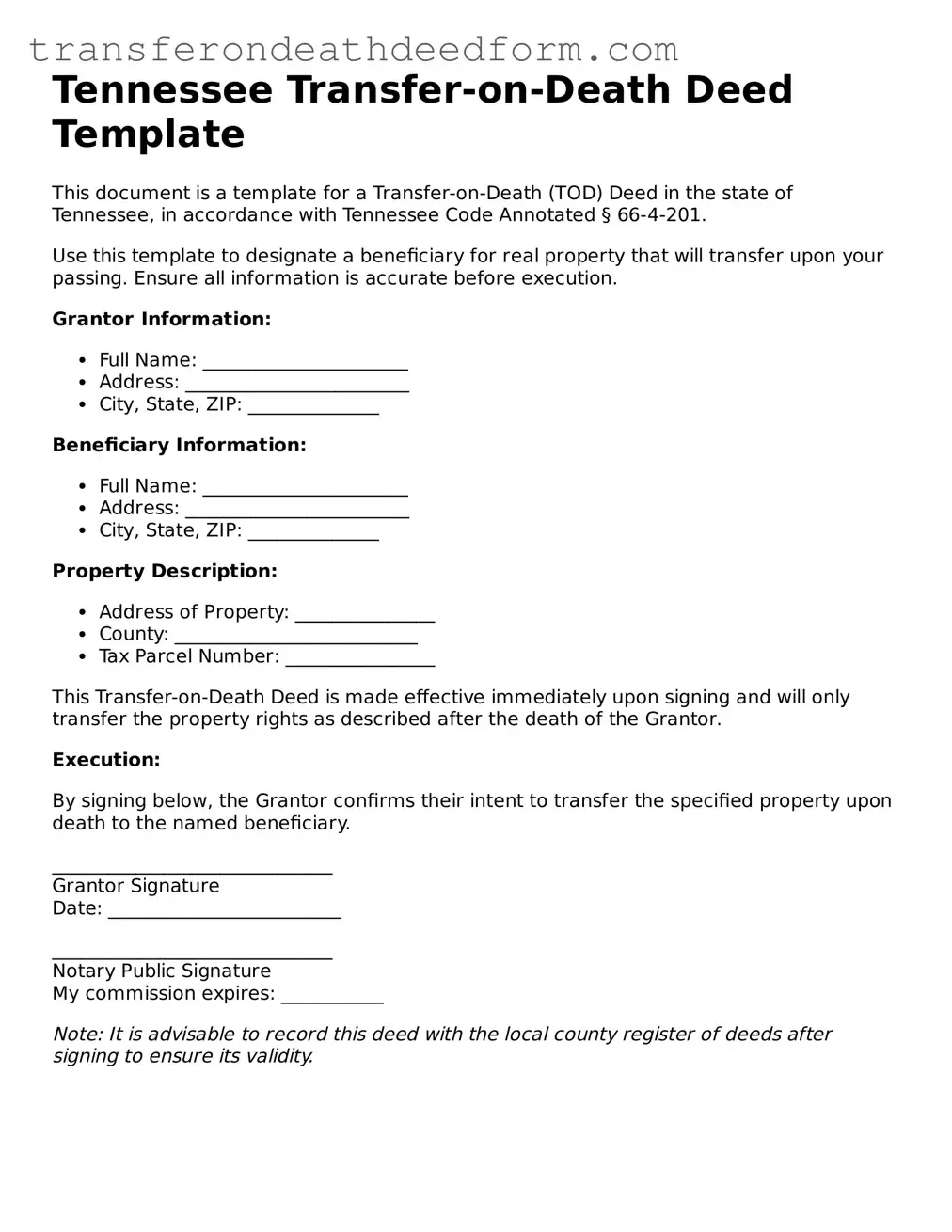Tennessee Transfer-on-Death Deed Template
This document is a template for a Transfer-on-Death (TOD) Deed in the state of Tennessee, in accordance with Tennessee Code Annotated § 66-4-201.
Use this template to designate a beneficiary for real property that will transfer upon your passing. Ensure all information is accurate before execution.
Grantor Information:
- Full Name: ______________________
- Address: ________________________
- City, State, ZIP: ______________
Beneficiary Information:
- Full Name: ______________________
- Address: ________________________
- City, State, ZIP: ______________
Property Description:
- Address of Property: _______________
- County: __________________________
- Tax Parcel Number: ________________
This Transfer-on-Death Deed is made effective immediately upon signing and will only transfer the property rights as described after the death of the Grantor.
Execution:
By signing below, the Grantor confirms their intent to transfer the specified property upon death to the named beneficiary.
______________________________
Grantor Signature
Date: _________________________
______________________________
Notary Public Signature
My commission expires: ___________
Note: It is advisable to record this deed with the local county register of deeds after signing to ensure its validity.
